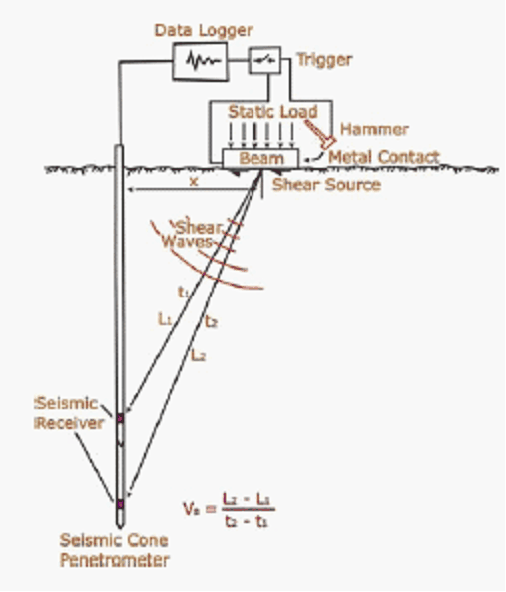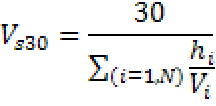Static seismic piezocone penetration test (SCPTU)
Using the seismic piezocone we have available a very quick and inexpensive way to determine: detailed stratigraphy, geotechnical parameters and velocity of shear waves.
The seismic piezocone allows you to determine in the same time the parameters of a static penetration test (qc, fs, U) and also the shear wave velocity (Vs). It consists of triaxial geophones, orthogonal between them according to the directions X, Y and Z.
The use of two accelerometers positioned orthogonally between them allows to acquire a significant seismic wave signal regardless of the orientation of the probe (during drilling is not possible to maintain an orientation).
The energizing system must generate predominantly shear waves in large amplitude with few compression components .
The analysis of the signal is made by charting individual signals recorded by the triaxial geophones.

For the calculation of the arrival times it can be used the cross-over method of superposition of two polarized signals.
From the values of the arrival times were calculated the Vs relative to the source-geophone segment and then the Vs in the lithologycal level.
For the classification of the ground reference is made to the parameter Vs30 corresponding to the velocity of shear waves in the first 30 meters.

Where hi and Vi indicate the thickness and the velocity of shear waves for N layers present in 30 meters.
© Geostru